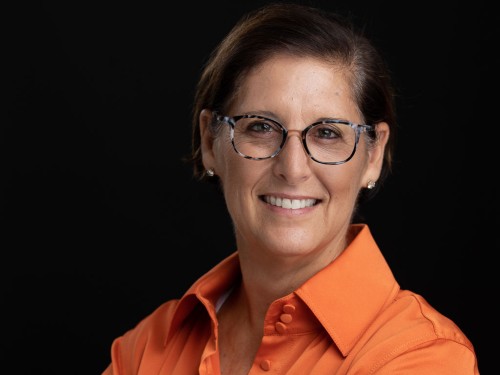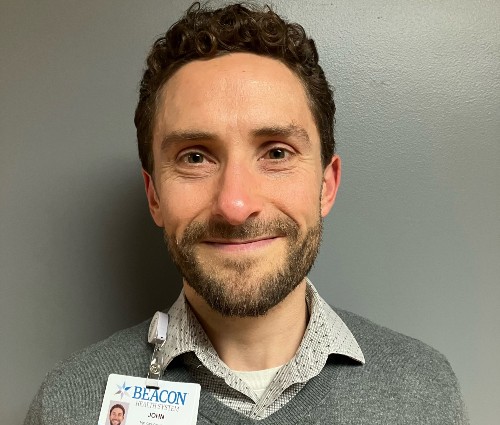Healthcare organizations across the country are launching RPM programs aimed at monitoring specific patient populations outside the hospital.
As healthcare organizations look to improve care management for patients outside the hospital setting, they're embracing remote patient monitoring in droves. New programs launched across the country are using everything from digital health tools and wearables to smart home technology and telehealth to connect patients to care teams.
"It's truly a new service model," says Karie Ryan, clinical transformation lead for connected care at Philips, who has been watching the growth of programs for the healthcare technology giant. "A lot of hospitals know it's the right thing to do and know it has value, but they don't know how to do it."
Ryan says large health systems "are well-positioned to own RPM" because they can use the platform as a population health tool, but smaller hospitals might not have the numbers to achieve sustainability and are looking at outsourcing to an RPM provider.
"There are many different ways" to develop an RPM program, she says. "None of them are wrong, but hospitals have to be very careful in planning these programs. We've seen many that were implemented during COVID that were never meant to be long-term solutions."
To that end, Ryan says she's worried that some health systems "jumped on the bandwagon" before plotting a sustainable use case, and they’re either just barely hanging on or dropping the program and giving RPM a black eye.
Among the factors that health system leaders need to address in developing an RPM program:
- Identifying the right patients to be monitored at home;
- Assessing the patient's home environment to ensure an RPM program will work;
- Understanding what data needs to be collected, and how to collect it;
- Identifying the technology needed, both at home and at the health system;
- Identifying participating members of the care team and developing or adjusting workflows to monitor patients at home;
- Establishing parameters and protocols for interventions, including emergency consults and hospitalizations;
- Setting parameters for the length a patient participates in an RPM program, and how to return technology once that participation has ended;
- Setting benchmarks for a program's success, sustainability, and scalability; and
- Incorporating other care providers into the program to address SDOH.
Among the more common reasons for launching an RPM program is to monitor patients living with chronic care needs, or helping patients recover and rehabilitate at home after a hospital stay. The more common goals are reduced hospitalizations or adverse health events, a reduction in healthcare costs and in-person visits, and improved clinical outcomes.
Ryan says the RPM model will evolve as the technology becomes more sophisticated and health systems understand more about how they want to collaborate with patients at home. She says the platform could also be used in advance of a hospital stay, to prepare patients for scheduled treatments such as surgeries.
To gauge how RPM is evolving, HealthLeaders spoke with three different health systems about their programs.
Using RPM for Chronic Care Management
Community Health Systems opted to partner with Cadence in 2022 to launch an RPM program covering hypertension and congestive heart failure, and has since added diabetes to the roster. Through this partnership, the Tennessee-based, 79-hospital network relies on care teams employed by Cadence to handle daily monitoring duties, with more urgent cases handled by CHS providers.
"We had had physicians that had tried [to launch RPM programs] and they were just overwhelmed by all the data," says Lynn Simon, MD, MBA, the health system's president of clinical operations and chief medical officer. "So we had to focus on reducing that burden on our physicians. Once we had the process down, it became very easy."

Lynn Simon, MD, MBA, president of clinical operations and chief medical officer, Community Health Systems. Photo courtesy CHS.
Simon says CHS wanted to focus on chronic conditions that would show improvement with regular monitoring and adjustments to the care plan, alongside a patient population that could manage using devices at home to gather data for the care team. The health system looked at more than a dozen RPM vendors before choosing Cadence, opting for a company that would help the health system's primary care providers with enrollment and monitoring. and loop in clinicians when necessary.
"We did a lot of work to select the right partner and make sure our doctors were on board," she says. "We didn't want it to feel like we were handing our patients off to another company, and that [Cadence care teams] were part of our care team. We also wanted to make sure there is still that connection to the primary care providers."
Simon says CHS held webinars and meetings to educate its providers on the value of an RPM program, and used a handful of early adapters to highlight the partnership with Cadence.
CHS has enrolled more than 2,300 patients in its programs to date, with plans to give another 700-800 providers access to the program and scale up to more patient populations. So far, she says, only about 1% of the RPM encounters has had to be elevated to a physician intervention.
"I thought it would be a little more challenging to get enough information back," she says. "But that hasn't been the case. And we're hearing anecdotal information [and] some good stories about how we've been able to avoid hospitalizations."
Targeting a High-Risk Population
At Kentucky-based Baptist Health, officials launched an RPM program in late 2021 to address care management for high-risk patients living with CHF. The health system partnered with Current Health, the healthcare arm of Best Buy, to launch the program with plug-and-play technology, which includes a tablet, blood pressure cuff, and a wearable.
Steven Heatherly, MD, the nine-hospital health system's medical director of heart failure and pulmonary hypertension, says Baptist Health specifically targeted an at-risk population that is 18% more likely to be rehospitalized and/or develop acute health concerns. These patients, he says, have an average age in their 70s, and often have problems following doctor's orders in between visits.
Through the RPM program, care teams gather data from patients three times a day and connect with patients via phone when necessary.

Steven Heatherly, MD, medical director of heart failure and pulmonary hypertension, Baptist Health. Photo courtesy Baptist Health.
"We decided not to do routine phone calls," Heatherly says, noting nurses would call if they weren't getting data from the devices in the patient's home or if that data indicated a health concern. "We didn't get excessive amounts of workflow out of this. It worked very well for us and didn't overwhelm" the care providers.
In the first 10 months of the program, he says, the health system did see an increase in clinic visits—not exactly a surprise, given the patients' ages and their acute conditions. But only one patient was rehospitalized, for an unrelated medical concern, and only two patients died. In addition, the patients in the program paid more attention to their care plans.
Heatherly says Baptist Health is now expanding the RPM program to other patients, including those with COPD and hypertension, and will be using the platform to follow patients after they've been discharged from a hospital. They're also opening the program to more hospitals and clinics.
"We've seen how it works with high-risk patients, so now we know what we can do," he says. "There are a lot more patients that can benefit from this.
Heatherly also wants to track data on quality of life and medication adherence, among other factors. And they'll be talking to payers about the benefits of the program.
'Even I was skeptical at first," he says. "But the results so far have been very good."
Continuing Care From the Hospital to the Home
The Beacon Health System launched its first RPM program earlier this year with a focus on patients with complex chronic conditions who'd been recently discharged from a hospital. The Indiana-based health system is partnering with Biofourmis on the population health program, using a platform that includes digital health tools and a mobile dashboard for clinicians. Biofourmis also assists in monitoring patients for the health system, primarily overnight and on weekends.
Roughly 80% of the patients chosen for the program are monitored episodically, with data gathered at specific times during the day or week; the other 20% are monitored continuously.
"We're really looking at the patients who need the most intervention to stay stable in the ambulatory space," says John Bruinsma, Beacon Health's manager of care coordination and population health. "These are high-need, high-cost patients who go through a cyclical pattern of needing multiple readmissions."

John Bruinsma, manager of care coordination and population health, Beacon Health System. Photo courtesy Beacon Health.
Bruinsma says the health system pulled in staff from care coordination, population health, IT, health information management, and finance to plan out the program, which was initially funded by COVID-19 funding from the CARES Act.
He says one of the biggest challenges was designing a process that matched the right care providers with the right patients after they went home.
"It took a lot of talking with the key stakeholders, but we're very optimistic about the answers that this program will provide up front," he says. "This is another tool we can use to help patients who are struggling to manage their symptoms at home or to interpret their symptoms."
Bruinsma says Beacon Health is looking at long-term outcomes with this program, as well as identifying and addressing social determinants of health that may be affecting access to care from the home. They're also tracking ED visits, rehospitalizations, adherence with scheduled doctor's appointments, and medication management and adherence.
He anticipates that patients might spend up to 30 days in the program before transitioning out.
"We might integrate with in-person visits, maybe look at a Hospital at Home program," he says. "We've looked at it, and we decided to start in the middle for now. Factoring in long-term care management might be the next step."
“It's truly a new service model. A lot of hospitals know it's the right thing to do and know it has value, but they don't know how to do it.”
— Karie Ryan, clinical transformation lead for connect care at Phillips.
Eric Wicklund is the associate content manager and senior editor for Innovation at HealthLeaders.
KEY TAKEAWAYS
Hundreds of remote patient monitoring programs have launched since the pandemic by health systems eager to track patients at home.
An RPM project has to be carefully planned before launch, with particular attention paid to technology, workloads, patient handoffs, and benchmarks.
Many programs are targeting patients with chronic conditions who need monitoring in between doctor's visits, as well as those discharged home after a hospital stay.
